Beastly Romances: Famous Human-Animal Couples (Images)
Barely even friends
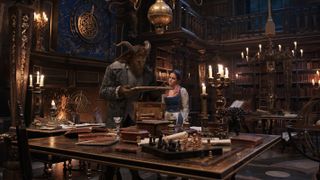
In the latest film retelling of the classic fairy tale "Beauty and the Beast" (Disney, 2017), a human girl named Beauty (Emma Thompson) pairs with Beast (Dan Stevens), a nonhuman mate. Their story represents one of many examples in folklore and pop culture of equally beastly pairings that bring together unlikely couples, in which one partner is human, but the other…not so much.
[Beauty and the Beast: Why Are We Fascinated by Human-Animal Mates?
Swan song

Greek mythology tells of the god Zeus assuming many unusual forms to seduce his human lovers. When he fell for the mortal girl Leda, he came to her in the shape of a swan.
Lizard woman from the dawn of time

In 2014, the long-running television show "Doctor Who" (BBC) introduced an inter-species married couple: Madame Vastra (Neve McIntosh), a member of the reptilian humanoid race known as the Silurians, and her wife, a human woman named Jenny Flint (Catrin Stewart). The pair live in Victorian London, where they work together as private detectives, and sometimes help the Doctor save the universe.
King of his world
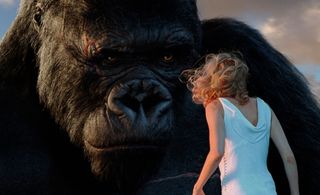
A variation on the story of Beauty and the Beast, "King Kong" — the tale of a giant ape who is gentle and protective toward the woman he loves — was first brought to the screen in 1933. It continues to captivate audiences today, with "King Kong: Skull Island" (Warner Bros.) released in theaters in March 2017.
A god disguised as a bull
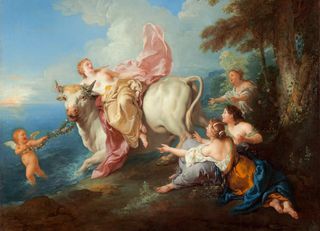
The Greek god Zeus may have been married to the goddess Hera, but he took plenty of human lovers on the side. To evade Hera's jealous attention, Zeus frequently disguised himself as an animal to approach the ladies who caught his eye. He abducted the maiden Europa while he was in the form of a white bull.
By night one way, by day another

Swamp-dwelling ogre Shrek (Mike Myers) and human Princess Fiona (Cameron Diaz) from the movie "Shrek" (Dreamworks, 2001) are worlds apart — or are they? After Shrek rescues Fiona from her isolated, dragon-guarded tower to bring her to marry eager bridegroom Lord Farquaad (John Lithgow), the ogre and the princess discover together that beauty is more than skin deep, and that they have far more in common than they initially thought.
Sign up for the Live Science daily newsletter now
Get the world’s most fascinating discoveries delivered straight to your inbox.
Always together, eternally apart
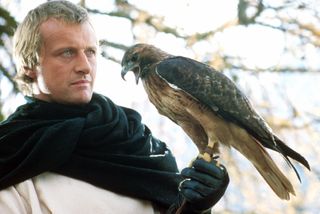
A jealous bishop curses star-crossed couple Navarre (Rutger Hauer) and Isabeau (Michelle Pfeiffer) in the medieval fantasy film "Ladyhawke" (20th Century Fox, 1985), transforming them so that they can never be together in human form. During the day, Isabeau shapeshifts into a hawk, and at night, Navarre becomes a wolf; they only see each other as they truly are for a moment at sunset and at sunrise.
La Belle et la Bête
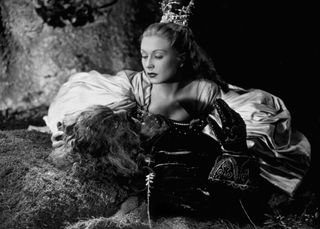
French poet and filmmaker Jean Cocteau brought an art-house touch to his 1946 movie interpretation of Beauty and the Beast, "La Belle et la Bête" (DisCina). There is little dialogue, and the story unspools in gestures and expressions, with composition and lighting that pay homage to fine artists and masters of surrealism. The film was widely praised as an artistic masterpiece, with noted film critic Roger Ebert calling it a "fantasy alive with trick shots and astonishing effects," and "one of the most magical of all films" in a review published December 1999 in the Chicago Sun-Times.
"My dream wouldn't be complete without you in it."

The 2009 Disney film "The Princess and the Frog" introduced an unexpected twist into the well-known fairy tale of a frog who is really a prince in disguise, and who is in search of a princess whose kiss will restore him to human shape. Tiana (Anika Noni Rose), an ambitious waitress in 1912 New Orleans who dreams of opening her own restaurant, is wooed by frog-prince Naveen (Bruno Campos), but when she kisses him, she is the one transformed — into a frog.
"He's my boyfriend!"
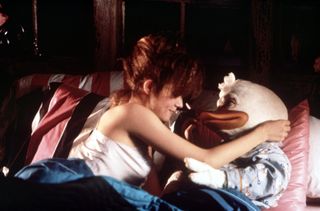
Cheesy science-fiction stories are usually associated with poorly crafted robots, spacecraft and aliens, but only one features a duck from outer space. Howard the Duck made his debut in comics in 1973, and the movie "Howard the Duck" (Universal Pictures, 1986) introduced the talking duck from Duckworld — a planet inhabited entirely by anthropomorphic ducks — to a wider audience. After Howard is unexpectedly transported to Earth, he becomes romantically involved with Beverly Switzler (Lea Thompson) and juggles managing her rock band with saving the planet from the Dark Overlord of the Universe.
"Is that a rabbit in your pocket or are you just happy to see me?"
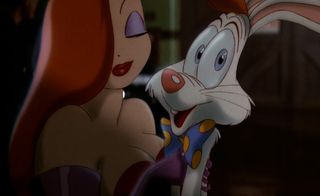
A manic talking rabbit and a voluptuous redheaded woman confront marital problems and murder in the groundbreaking movie "Who Framed Roger Rabbit?" (Buena Vista Pictures, 1988), which combined live actors with two-dimensional cartoon characters. In this whimsical view of 1940s-era Hollywood, "toons" — animated individuals — are real, and live alongside real people, though in their own section of Los Angeles known as Toontown. Anthropomorphic bunny Roger Rabbit (Charles Fleischer) is head-over-heels in love with his beautiful toon wife Jessica (voiced by the uncredited Kathleen Turner), who is suspected of cheating on him — with a human.

Mindy Weisberger is an editor at Scholastic and a former Live Science channel editor and senior writer. She has reported on general science, covering climate change, paleontology, biology, and space. Mindy studied film at Columbia University; prior to Live Science she produced, wrote and directed media for the American Museum of Natural History in New York City. Her videos about dinosaurs, astrophysics, biodiversity and evolution appear in museums and science centers worldwide, earning awards such as the CINE Golden Eagle and the Communicator Award of Excellence. Her writing has also appeared in Scientific American, The Washington Post and How It Works Magazine.
